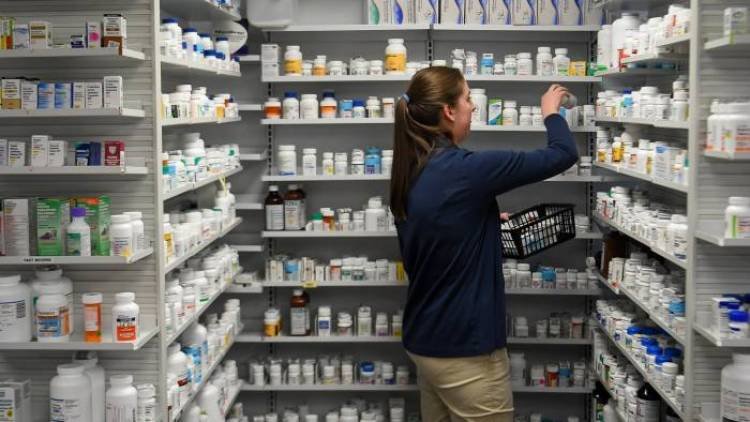Five things to watch out for in pharma and healthcare in 2020 for Indian Pharma Companies

It has been a mixed bag for pharmaceutical and healthcare sectors in 2019.
The US business has proved to be a tough task for yet another year as structural headwind still persisted despite the flattening out of price erosion at 5-6 per cent as compared to steeper falls in earlier years.
A shift towards patient-centric quality care, enhanced use of technology in delivering care, and higher share of India in medical tourism are some of the dominant trends which the Indian healthcare sector is going to witness in 2020.
Most companies tightened costs and focused on reducing debt. There has also not been any major disruptive policy action with the exception of trade margin caps on 42 cancer medications.
Pharma and healthcare sectors are to some extent insulated from the general economic slowdown but a recessionary economy makes people go slow on elective surgeries.
Here are five things to watch out for:
Domestic Formulation Business
The domestic formulation business has now become a key driver of growth for Indian companies. In 2019 the Indian pharmaceutical market grew at 10 percent. Domestic formulation business is highly competitive, with large chunk of drugs under price controls, but large India drug makers are committing investments on expanding portfolios and building brands focused on chronic and lifestyle diseases.
The upcoming 2020 too, the industry is expected to maintain 10 percent growth, despite the talk about government imposing trade margin caps on drug not covered under price controls. Companies will focus on specialty, over-the-counter, and innovative medicines to beat competition.
US generic business
Selling copycat drugs in US, until a few years ago was the most lucrative business for Indian drug makers. This isn't the same now. Due to the consolidation of the buyers and distributors and cut-throat competition in US market, manufacturers of generic drugs have to take heavy price cuts, eroding their margins. The extent of pricing pressure has softened from high double digit to mid single digit in 2019, but it continuous to be a challenge. The pricing pressure did had a fallout. Large generic makers like Teva, Mylan, Sandoz, Sun Pharma have all resorted to rationalisation of product portfolios, exited low margin products, which eased the overall pricing pressure the industry faced.
The year 2020 isn't going to be very different. Indian drug makers will continue their investments on complex drugs, specialty and biosimilars. Sun Pharma, Biocon, Dr Reddy's, Lupin, Aurobindo Pharma are some of the companies to watch out for.
Regulatory challenges
The USFDA scrutiny over Indian manufacturing sites exporting drugs to US will likely to intensify in 2020.
Regulatory compliance woes have been a bane for Indian drug makers. In 2019, around 18 pharma companies received warning letters for their Indian plants. This was double compared to those received in 2018.
The other major problem faced by many Indian drug makers was the presence of cancer-causing impurities in products. The impurities in most cases was due to the process. In 2020, companies will have to work on these challenges.
Hospital business recovery
The hospital sector is back on the growth path after two years of subdued performance due to regulatory measures. The consolidation in hospital sector is expected to continue in 2020, albeit at much smaller scale. The large hospital chains have reached end of their major capex cycles in 2019, and now focusing on improving operating metrics like occupancy ratios and average revenue per occupied bed (ARPOB). Paring debt too becomes critical for hospitals to reduce finance costs.
Most hospital chains will continue to work on cost cutting initiatives leveraging scale in procurement, shared services and outsourcing of non-core functions.
Large hospital chains are focusing on attracting medical travel, more complex medical procedures like organ transplants to boost margins.
The standalone hospitals will find it difficult and may be targets for larger hospital chains.
However, the concerns of regulatory actions like capping procedure rates, and levying penalties, will continue to be overhang.
The hospitals have limited maneuverability to increase package rates, adding to that the delays in release of payments under CGHS, EGHS and other state government health schemes is also becoming a problem.
In 2020, the overall performance is expected to improve, but the challenges will remain.
Government policy actions
In 2019, the government policy making with respect to healthcare and pharma saw some key changes. The government policy think tank Niti Aayog has assumed larger role in setting the policy. The government focus is to reduce the out of pocket expenditure on patients and to ensure that the overall costs of healthcare moderate, to lessen the burden on its finances to implement Ayushman Bharat, which has completed a year.
In 2020, we could expect some clarity on trade margin caps of drugs, a draft bill for medical devices and a law for regulation of e-pharmacies.

















